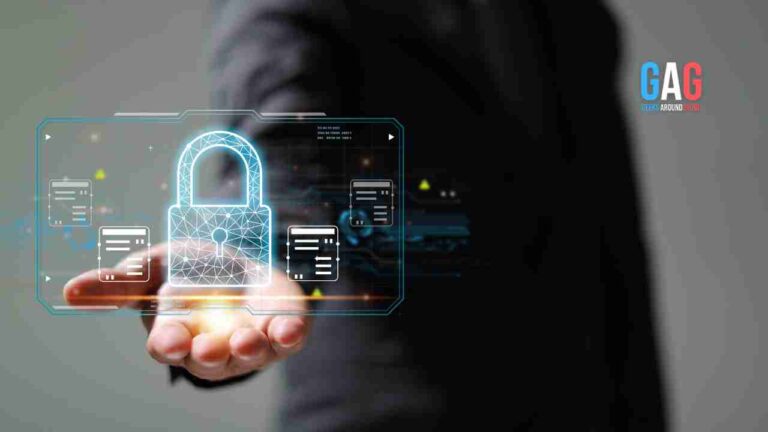- 1. What is a PKI System and Why it’s Important?
- 2. Setting Up Your PKI Infrastructure
- 3. Establishing Relationship Between the Server and Client
- 4. Implementing Secure Authentication Processes
- 5. Practices for Securely Managing Keys and Certificates
- 6. Monitoring, Auditing, and Detecting Security Breaches
- 7. Final Thoughts
Building and maintaining a secure public key infrastructure (PKI) system is essential for any organization storing, transmitting, or receiving sensitive data. Organizations are at risk of data breaches and other security threats without a reliable PKI system. Fortunately, there are steps to protect your organization’s data with the help of industry experts who understand asymmetric encryption and other PKI-related topics. Learn from industry experts about building and maintaining a secure PKI system and using asymmetric encryption to protect your organization from cyberattacks.
What is a PKI System and Why it’s Important?
Information security has become one of the most important aspects for individuals and businesses. This is where a PKI System comes in. PKI stands for Public Key Infrastructure, a set of technologies that enables secure communication over a network. A PKI System comprises various components, such as digital certificates, public and private keys, and Certificate Authorities (CA), that work together to ensure authorized users can access information. The importance of having a PKI System cannot be overstated, as it provides data confidentiality, integrity, and authenticity. By implementing a PKI System, you can rest assured that your digital assets are protected from cyber threats and that your organization can confidently conduct its online operations.
Setting Up Your PKI Infrastructure
Asymmetric encryption is a vital component in setting up your PKI infrastructure. To get started, you must first identify the requirements for your specific scenario and then follow the necessary steps to establish a solid infrastructure. This might include setting up root CA and intermediate CAs and determining the appropriate certificate policies and validation procedures. Ensuring that your public key infrastructure is carefully structured and adequately secured can help you protect sensitive data and safeguard the integrity of your organization’s communications. With the proper protocols, you can rest assured that your PKI infrastructure will effectively support your organization’s needs.
Establishing Relationship Between the Server and Client
Establishing trust between the server and the client is essential to ensure secure communication and prevent potential cyber threats. A trust relationship is the foundation of any successful online transaction, assuring the parties involved that their information is confidential and secure. By developing a trust relationship, clients can confidently share their personal information with the server, allowing for a more seamless online experience. Establishing this trust requires implementing security protocols and encryption to keep data exchanged between the server and client private. Ultimately, creating and maintaining a trusting relationship between the server and client is essential in building a solid foundation of trust in the online world.
Implementing Secure Authentication Processes
It is essential to implement secure authentication processes for access control. One way to accomplish this is through the use of asymmetric encryption. This approach uses two keys, a public key, and a private key, to ensure secure communication between two parties. With this method, only the person with the private key can access the data, making it significantly more challenging for unauthorized parties to gain access. Asymmetric encryption is just one of the many tools available to help keep sensitive information secure and out of the hands of those who should not have access to it.
Practices for Securely Managing Keys and Certificates
Cybersecurity threats are becoming more and more complex. Keeping your keys and certificates secure is crucial to protecting your organization from these threats. One of the best practices for managing keys and certificates is to use a comprehensive digital certificate management platform. This platform can provide certificate visibility, lifecycle management, and automation of certificate renewals. Another practice is to secure key storage with hardware security modules, which provide an extra layer of protection for your keys. And don’t forget about key rotation, which ensures that your keys are updated regularly and minimizes the risk of a compromised key being used for an extended period. These practices and ongoing evaluation and improvements can help your organization protect from potential security incidents and maintain customer trust.
Monitoring, Auditing, and Detecting Security Breaches
Security breaches can happen anytime, putting your PKI system at serious risk. Therefore, it’s essential to have effective monitoring, auditing, and detection strategies in place to minimize any damage. One of the most important things to remember is that these strategies should be continuous rather than a one-time event. Regular monitoring and auditing of your PKI system’s security will help you detect any anomalies or vulnerabilities before they lead to a breach. Investing in automated detection tools to monitor potential threats can be a game-changer regarding security. You can quickly prevent severe damage by detecting issues before crises and keeping your organization and data safe. Remember, it’s never too late to implement security strategies, and any effort toward security is better than none.
Final Thoughts
PKI provides the necessary safeguards to ensure secure data transmission and access by eliminating the risk of man-in-the-middle and other malicious attacks over your networks. Organizations must pay close attention to the requirements for setting up a PKI infrastructure, establishing trust relationships, securely managing certificates, implementing authentication processes, and developing strategies for monitoring breaches. In a highly competitive digital environment, where cyber threats constantly change and evolve, embracing effective PKI processes is crucial to protect your company assets and keep operations running smoothly. With the help of robust PKI systems, organizations can prevent catastrophic losses resulting from external or internal threats and ensure business continuity in any technological climate.







